Nina Munteanu's Blog, page 8
November 14, 2014
Friends of Merril Short Story Contest Now Open
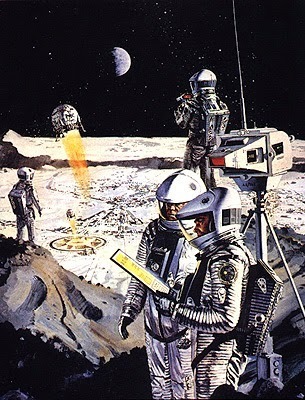 Calling all speculative short fiction writers!
Calling all speculative short fiction writers!Charlotte Ashley just informed me that The Friends of the Merril Short Story Contest is now open for submissions. Here are the guidelines:
From now until February 15th, 2015 our readers will consider speculative short fiction up to 6000 words for the top prize of $500, with two honourable mentions of $50 available as well. After that, the long-listed stories will be passed to our panel of judges, who choose between them the three winners. We encourage multiple submissions, simultaneous submissions, strange submissions – well, for more information on exactly what we want from these submissions, have a look at our guidelines.
All entries must be accompanied by $5 CDN (payable by PayPal). If you would like to enter multiple stories, each entry must be accompanied by its own entry fee. All entry fees will go toward supporting the many activities of the Friends of the Merril Collection at the Toronto Public Library, so don’t be shy! Donations to the Friends can also be made directly here.
To enter, send your submission to fomsscontest@gmail.com, then click the button below to pay your fee. Please make sure the name of the story on your payment matches the story you have submitted to us!
Published on November 14, 2014 11:39
Blogging and Social Media Workshop for Writers
 My November 9th workshop on
Blogging & Social Media for Writers
was held at the Mississauga Central Library. It was the second workshop in the “
Telling My Story
” workshop series conducted by
Rise Up! Rise ABOVE
! (Ru!RA!), a not for profit organization dedicated to empowerment through creativity.
My November 9th workshop on
Blogging & Social Media for Writers
was held at the Mississauga Central Library. It was the second workshop in the “
Telling My Story
” workshop series conducted by
Rise Up! Rise ABOVE
! (Ru!RA!), a not for profit organization dedicated to empowerment through creativity.The workshop navigated writers with differing levels of social media proficiency, exploring anything from the Twitter gospel of using hashtags (#) to why a blogger should also use Facebook. Writers from a wide range of genres were eager to learn and generated exuberant discussion.
“When I decided to attend the session on blogging, I was sure in myhttp://riseupriseabove.ca mind that I will not find the time to do it; but I just wanted toNina teaches about bloggingknow about it all the same. Nina's enthusiastic and yet demystifying class, converted me. She made the activity of blogging both enjoyable and somehow a necessary aspect of modern life - the new communication to connect with the World, the people, our audience.”—Prata Reddy, Toronto writer
The workshop overviewed the history of social media; we reviewed the five most common and useful social media and what their best uses are; and I described the structure of a typical blog. I reviewed: branding, SEO (how to bring and keep traffic coming to your blog), tagging, content, times and schedules, comments and linking to / from other social networks. Through my own example over a dozen blogs (both my own and guest blogging) and as many social media, I explored a system that allowed me to create a strong Internet presence—and still have time to go to the beach!
 Nina Munteanu with RuRA's Cheryl XavierThe
Blogging & Social Media Workshop for Writers
is ongoing through RuRA! If you’re a Toronto writer and starting a blog or just wondering if you should, this workshop is for you. Contact Ru!RA! for the next Blogging Workshop in the GTA.
Nina Munteanu with RuRA's Cheryl XavierThe
Blogging & Social Media Workshop for Writers
is ongoing through RuRA! If you’re a Toronto writer and starting a blog or just wondering if you should, this workshop is for you. Contact Ru!RA! for the next Blogging Workshop in the GTA.For more information on the Telling My Story workshop series and on RuRA! visit my previous post here.
Contact:
For more information on Ru!RA! and their programs go to their website or contact the director, Cheryl Antao Xavier at cxavier@riseupriseabove.ca.
Ru!RA! Website: http://riseupriseabove.ca
Published on November 14, 2014 11:17
November 11, 2014
Remembrance Day—Lest We Forget Why…
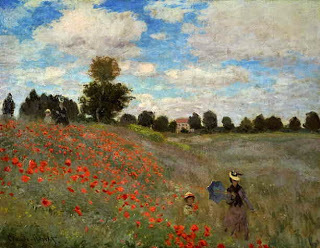 Poppy field by MonetThose who cannot remember the past are condemned to repeat it—
Poppy field by MonetThose who cannot remember the past are condemned to repeat it—Santayana
Today is dedicated to those who gave their lives for freedom. It is also a reminder of the atrocity of war in all its forms.
War is a paradox. It is both tragic and an opportunity. The very action of being at war, seems to galvanize us and polarize us. War heightens contrast, increases pitch, and resonates through us. It brings out the very worst but also the very best in us; for, as some of us sink into despair and debauchery to help ourselves, others heroically rise in service and humble sacrifice to help others. War defines us, perhaps like no other phenomenon.
Said Dickens in “A Tale of Two Cities”:
“It was the best of times, it was the worst of times, it was the age of wisdom, it was the age of foolishness, it was the epoch of belief, it was the epoch of incredulity, it was the season of Light, it was the season of Darkness, it was the spring of hope, it was the winter of despair, we had everything before us, we had nothing before us, we were all going direct to Heaven, we were all going direct the other way…”
Let us remember, so that those who follow us have a chance to remember too…
In Flanders Fields In Flanders fields the poppies blow
Between the crosses, row on row,
That mark our place; and in the sky
The larks, still bravely singing, fly
Scarce heard amid the guns below.
We are the dead. Short days ago
We lived, saw dawn, felt sunset glow,
Loved, and were loved, and now we lie
In Flanders fields. –John McCrae
Doctor Major (later Lieutenant-Colonel) John McCrae of the 1st Field Artillery Brigade wrote this poem on May 3, 1915 after the battle at Ypres. The poem was later published in "Punch", December 8, 1915.
Published on November 11, 2014 12:07
November 9, 2014
Perfecting the Cat Purr Meditation...
 Willow Her name is Willow, and she helps me centre my being...
Willow Her name is Willow, and she helps me centre my being...Willow is a diminutive 18-year old Russian blue cat, who I looked after for some friends in Mississauga. When I first met Willow, she responded with reticence--like all smart discerning cats. She appeared so delicate, I was scared to pick her up. I soon realized that this was a fallacy. That not only could I pick her up but that she loved to be held. I just needed to learn how.
As soon as I did, we became best friends. And it all came together with the Purring Cat Meditation.
It starts out with her finding me "doing nothing terribly important" like typing on the computer, or something. A soft but decisive tap of the paw on my leg and I have to smile at her intense look up at me with those guileless emerald eyes. I abandon my work--how can I ignore such a plea?-- and pick her up. After all, I know what she wants...And so starts our journey toward "nirvana"... the meditative state that will centre our beings and ultimately save the world.
I wander the house with her. We check out each room and make our silent observations. We end up in the bedroom upstairs, where she normally sleeps (except when she's decided to join me on my bed to sit on me and purr in my face in the middle of the night).
 Willow teasing me...
Willow teasing me...In her sanctuary, we drift to the window that faces the back yard, now in the bright colours of fall. The window is slightly open and a crisp breeze braces us with the deep scent of autumn. I breathe in the fragrance of fallen leaves, mist and bark...
Willow settles into a feather-light pose in the crook of my arms and I hardly feel her. More like she and I have joined to become one. We are both purring ...
 "Time to pick me up, Nina!" she saysWe remain in Cat-Purr-Meditation for ... I have no idea ... It feels like moments ... infinity ... it encompasses and defines an entire world. We've just created something. Just by being.
"Time to pick me up, Nina!" she saysWe remain in Cat-Purr-Meditation for ... I have no idea ... It feels like moments ... infinity ... it encompasses and defines an entire world. We've just created something. Just by being.Cats--well, most animal companions--are incredibly centring and can teach us a lot about the art of simply being.
And meditating...
I write about this more in my article on my coaching site entitled "Wake Up Your Muse: How my Cat Taught Me the Art of Being". Whenever I run across a bout of writer's block or need to stoke my muse, instead of trying harder, I stop and reach out for my cat-friend.
And practice Cat-Purring-Meditation...
Published on November 09, 2014 19:27
November 3, 2014
Telling My Story: Blogging & Social Media Workshop November 9, 2014 in Mississauga, ON
 Rise Up! Rise ABOVE! is holding its second "Telling My Story" Workshop on November 9th (2014) in the Mississauga Central Library from 2-4pm.
Rise Up! Rise ABOVE! is holding its second "Telling My Story" Workshop on November 9th (2014) in the Mississauga Central Library from 2-4pm.The workshop specifically covers blogging and social media as story telling.
In this interactive 2-hour workshop, I'll explore the elements of storytelling for this specific media, how to create a good blog, how to use it, SEO techniques (with other social media) and the pros and cons of keeping one. The workshop will also cover how to do research, and privacy issues.
Worksheets are included. Educational books and DVDs will also be available for sale.
I've been a blogger of over five of my own blogs and guest blogging for over seven years; but I still have time to go to the beach. Find out the secrets that took me years to figure out.
Where: Room 2, Mississauga Central Library, 301 Burnhamthorpe R. W, Mississauga, ON; 905-615-3500.
When: Sunday, November 9, 2014, 2-4 pm
Fee: $20/person (cheque or cash at workshop)
Pre-Register: via email to cxavier@riseupriseaabove.ca
 Ru!RA! is a not-for-profit corporation (registered federally in Canada) with a mission to bring about Empowerment through Creativity. RuRA! uses a creative arts approach (writing, art, music, dance) to get past stumbling blocks/trauma/discrimination/mental health issues that hold us back as individuals or communities from moving forward with our lives.
Ru!RA! is a not-for-profit corporation (registered federally in Canada) with a mission to bring about Empowerment through Creativity. RuRA! uses a creative arts approach (writing, art, music, dance) to get past stumbling blocks/trauma/discrimination/mental health issues that hold us back as individuals or communities from moving forward with our lives."The creative process helps immeasurably in externalizing the trauma/issue and holding it at arm's length while we learn coping skills and (hopefully) discover a passion for a particular form of creative expression. Our reach is to all communities with a focus on women, youth and native groups. We are developing workshop models around art/poetry expression and "Telling my Story" is one of them."--Cheryl Antao Xavier, Executive Director
Published on November 03, 2014 19:32
October 31, 2014
NASA Space Sounds
Despite what you've heard, there are actual sounds in space...
Due to the virtual vacuum in space, it's not sound like you and I experience it (waves pulsing through the air) but electromagnetic waves that pulsate at the same wavelength as the sound waves we can hear.
Instruments on several NASA probes, including Voyager, recorded these waves and translated them into a sound that we can hear.
Some people found the sounds eerie, even terrifying. They did remind me of an epic science fiction movie: multi-timbral, fluting sounds that resonated with waves of pulsating rings and whistles; all punctuated with elements of rushing ships on a causeway. Truly amazing and awe-inspiring.
Sounds were recorded for Jupiter, Saturn, Miranda, Uranus, Neptune, Io and Earth. Listen to the true nature of the solar system and let the sounds take you on a true wonderland tour...
Published on October 31, 2014 10:36
October 15, 2014
"Telling My Story" Workshop in Mississauga October 19
Published on October 15, 2014 08:21
September 19, 2014
Embracing Your Future: Natural Swimming Pools
 NSP-EcohomeYou step out of your Point Grey house and stroll down to the Hydrogenase Hub at Kits Beach in Vancouver. You’re heading out to visit your ecologist friend Michael, who has been renovating his property on Galiano Island. You helped him design his place, which included an outdoor natural swimming pool. The work is finished and Michael’s invited you over to see what they’ve accomplished.
NSP-EcohomeYou step out of your Point Grey house and stroll down to the Hydrogenase Hub at Kits Beach in Vancouver. You’re heading out to visit your ecologist friend Michael, who has been renovating his property on Galiano Island. You helped him design his place, which included an outdoor natural swimming pool. The work is finished and Michael’s invited you over to see what they’ve accomplished.You reach the floating station, which serves as an algal farm to capture biological fuel. At the gate, you give your personal landing coordinates and then board a Hydrogenase airship--essentially a tall seed-shaped "algal balloon". You settle in one of the viewing rooms with a Chai latte. Because the Hydrogenase can effortlessly land and take off in the roughest terrains, their service includes "on demand" to "your doorstep". This is a good thing, you ponder, given that many people live in more remote locations--like Michael. The sleek vessel glides over Georgia Strait toward the Gulf Islands and you watch the view, reflecting on the history of NSPs in North America.
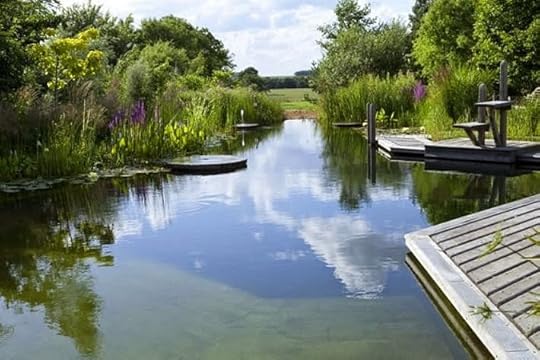 NSP Woodhouse in the UK
NSP Woodhouse in the UKThe first Natural Swimming Pools were developed in Austria ten years before you were born. Known as schwimmteichethe first one was built in the early 1980s by DI Werner Gamerith in his private garden. NSPs spread throughout Europe in the 1990s, where thousands were built by companies like the Austrian firm Biotop Landschaftsgestaltung and the German firm BioNova. But it took almost two decades for the NSP concept to catch on in North America. The first public NSP in North America was built in 2014 by BioNova in Webber Park, Minneapolis. The NSP featured a shallow end with a beach and a deep end, a waterfall, lap lanes, a water slide, and a natural stone jumping cliff. The pool is used in the winter for skating.
 NSP Armand Aquatech PoolsThat same year, your mother (Nina Munteanu) wrote a book about water. Published in 2015 and entitled
Water Is…
the book explored water from a range of perspectives. Spanning points of view from limnology to human health, spirituality and metaphysics, her book touched upon the importance of good, clean “living” water for ecosystems generally and for human health specifically.
NSP Armand Aquatech PoolsThat same year, your mother (Nina Munteanu) wrote a book about water. Published in 2015 and entitled
Water Is…
the book explored water from a range of perspectives. Spanning points of view from limnology to human health, spirituality and metaphysics, her book touched upon the importance of good, clean “living” water for ecosystems generally and for human health specifically. You consider that your mom would be delighted at the present statistics. In 2014, only one commercial NSP existed in North America. Today, just two decades later, it’s hard to find one chlorinated pool amid the thousands of private and commercial NSPs in North America. And why not? Old fashioned pools relied on chlorine and other harsh chemicals to maintain sterile, algae-free water. They lacked character or aesthetics. Research showed that chlorine-treated swimming pools caused asthma and other breathing problems in swimmers. Chlorine was also hard on the skin and hair. Swimming in a chlorinated pool often left you with itchy red eyes, dry skin or wanting a shower. NSPs provide excellent water quality through chemical-free water treatment; they create habitat for wildlife and flora and the maintenance costs are far less than the old conventional pools.
 NSP Robins Nest Aquatics
NSP Robins Nest AquaticsThe Hydrogenase descends to a clearing past the end of Bodega Beach Road on Galiano. You spot Michael waiting in the clearing. The hydrogenase briefly touches down to let you off and Michael greets you with a rakish smile. He's happy to see you and show off his new creation. Michael leads you along a forested path to his summer property near the northern cliffs of the island, overlooking Porlier Pass and Georgia Strait.
 NSP Genus Loci CanadaAs you turn a corner and the forest opens to the cliffs on which the house is perched, you see the pool and glance at Michael with a sideways grin. Surrounded by a constructed shoreline of large and small rocks and wetland plants, the pool forms a kind of figure-eight in front of the house you designed for Michael. A gazebo made from local wood sits cozy by the natural shoreline, its inviting diving board overlooking the sparkling water. It's all so beautiful. And serene.
NSP Genus Loci CanadaAs you turn a corner and the forest opens to the cliffs on which the house is perched, you see the pool and glance at Michael with a sideways grin. Surrounded by a constructed shoreline of large and small rocks and wetland plants, the pool forms a kind of figure-eight in front of the house you designed for Michael. A gazebo made from local wood sits cozy by the natural shoreline, its inviting diving board overlooking the sparkling water. It's all so beautiful. And serene.You both wander to the pool and you bend down on your knees to look into the deepness of the sparkling clear water.
 NSP schematic
NSP schematicNatural swimming pools are balanced living aquatic ecosystems, you reflect. They are designed to look and function like a natural pond. Plants, microorganisms and nutrients together create what's called “living water”. Michael points to a water strider, dancing over the water surface--a sign that the water is clean and "alive".
 NSP EcohomeYou glance over to the wetland portion of the pool. Although you don't see them all, you know the components: a set of bio-filters, UV filters, and mechanical aeration in combination with lush aquatic plant filters that form a regeneration zone—the signature feature of an efficient NSP.
NSP EcohomeYou glance over to the wetland portion of the pool. Although you don't see them all, you know the components: a set of bio-filters, UV filters, and mechanical aeration in combination with lush aquatic plant filters that form a regeneration zone—the signature feature of an efficient NSP. The regeneration zonemaintains the water quality in Michael's natural swimming pool. It connects to the open swim zone through an ongoing circulation system. Water flows out of the swimming area via overflow channels through biological filters that catch large debris and particulate matter before reaching the regeneration zone. A circulation pump then draws the water out of the regeneration zonethrough layers of gravel substrate and returns it, pristine but living, back to the swimming area.
 NSP Biotop Austria
NSP Biotop AustriaIt's Nature's elegance at its best, you think; according to architect Thomas Woltz, embracing the complexity of modern life while seeking meaning and narrative in both natural and man-made environments.
The regeneration zone relies on the surface area of the plants’ roots and the gravel substrate to create a home for beneficial bacteriathat filter the water. You recognize floating, emergent and submerged plants: water lily, sedges, rushes and grasses. And below the surface, you see the fluorescent green whorles of Ceratophyllum, a rooted submerged plant that helps oxygenate the water.
 NSP in GermanyYou stand up and scan the whole set up. At the edge of the regeneration zone, the natural look continues with a wetland gradient of native plants that thrive in the periodically inundated soil. They provide a rich habitat for birds, dragonflies, frogs, turtles, newts, and a host of other fauna, some of which share the swimming pool with fellow swimmers. Michael, who is an avid birder, points to the cattails, where some blackbirds have already made nests. He tells you that he spied a wood duck checking out the pond yesterday.
NSP in GermanyYou stand up and scan the whole set up. At the edge of the regeneration zone, the natural look continues with a wetland gradient of native plants that thrive in the periodically inundated soil. They provide a rich habitat for birds, dragonflies, frogs, turtles, newts, and a host of other fauna, some of which share the swimming pool with fellow swimmers. Michael, who is an avid birder, points to the cattails, where some blackbirds have already made nests. He tells you that he spied a wood duck checking out the pond yesterday.You ask him if he is pleased and know what he will answer from his zealous grin.
 NSP Biotop
NSP BiotopYou glimpse a dragonfly and follow its irregular path into the cattails. Twenty years ago, when NSPs first gained popularity in North America, you recall the concern over mosquitoes and other nasty insects. But the moving water and the natural predators of mosquito larvae that live in the chlorine-free water make natural swimming pools practically mosquito free. In fact, researchers found that NSPs actually helped reduce the population of stinging insects by attracting dragonflies and other natural predators of fully developed mosquitoes.
 NSP BiotopYou remember your mom lamenting twenty years ago about people's lack of ecological knowledge and connection to the environment. A lot has happened in twenty years, you consider. Today, no one would think to use nasty chemicals in the water to kill everything; people somehow have learned to cherish life more. All life. Including the frogs and that little water strider for their role in providing a healthy ecosystem.
NSP BiotopYou remember your mom lamenting twenty years ago about people's lack of ecological knowledge and connection to the environment. A lot has happened in twenty years, you consider. Today, no one would think to use nasty chemicals in the water to kill everything; people somehow have learned to cherish life more. All life. Including the frogs and that little water strider for their role in providing a healthy ecosystem.
 Kevin Klassen
Kevin KlassenThe prefix eco- means "home". So, taking care of our ecosystem is really like taking care of our "home", where we live and belong. Natural swimming pools are just one example.
Michael grins with sudden inspiration. "Kevin, let's go for a swim!" he says. You nod. Why not? Can't leave it to the frogs.
Resources:
Do it Yourself :
• www.motherearthnews.com• www.schwimmteich-selbstbau.de In German• www.naturalswimmingpools.com-construction images• Natural Swimming Pools Book by Michael Littlewood www.amazon.com
Builders of Natural Swimming Pools :
EU:
• Biotop since 1984 with more than 3,500 satisfied customers. Their partner network covers 17 countries. Head Office: Austria www.biotop-natural-pool.com
• BioNova® is a global network of Partners on 6 continents who work synergistically to push the state-of-the-art of Natural Swimming Pool design, construction, aesthetics and maintenance. Head Office: Munich www.bionovanaturalpools.com
• OASE: www.oase-livingwater.com
UK:
• GartenArt: www.gartenart.co.uk
• Woodhouse Natural Pools with BIOTOP™ have been developing and building naturally filtered swimming pools in the UK since 2000: www.naturalswimmingpools.com
• Clear Water Revival: www.clear-water-revival.com sell KITS as well...
France:
• Bioteich Baignades Naturelles: www.bioteich.fr
U.S.
• Total Habitat, Kansas: www.totalhabitat.com• Expanding Horizons, Calif: expandinghorizons.biz• Pond Doctor Dave, Arizona - does conversions: www.pond-doctor-dave.com• Water House Pools, Massachusetts: www.waterhousepools.com• Rin Robyn Pools, New Jersey & MA: rinrobyn.com• Kane Brothers, Illinois: kanebros.com
Canada:
• Genus Loci Ecological Landscapes, Ont: www.genus-loci.ca
New Zealand:
• Natural Pools: naturalpoolsnz.com
South Africa:
• www.naturalswimmingpools.co.za nice designs!
Published on September 19, 2014 15:12
September 13, 2014
Hot-Desking Dehumanizes Work Place
 The "Doc" Hot desking on "Doc Zone"In my 2006 science fiction short story
Virtually Yours
, Kathryn works, drone-like and faceless, in a corporation where workers like her typically find random virtual workstations and access virtual support and form virtual relationships. Anonymous to even her own overseer—she is just a number to him—Kathryn pines for a sense of place, identity, recognition and purpose. I won’t tell you how it ends. In any case, it’s just a science fiction story. Or is it?...
The "Doc" Hot desking on "Doc Zone"In my 2006 science fiction short story
Virtually Yours
, Kathryn works, drone-like and faceless, in a corporation where workers like her typically find random virtual workstations and access virtual support and form virtual relationships. Anonymous to even her own overseer—she is just a number to him—Kathryn pines for a sense of place, identity, recognition and purpose. I won’t tell you how it ends. In any case, it’s just a science fiction story. Or is it?...In his September 11, 2014, article in the Financial Post , Garry Marr introduces professional services firm Deloitte’s intention to rid itself of offices and have no permanently assigned desks in what’s called hot desking. Described as a “growing trend” in the corporate business sector, the model mandates a worker—including the bosses—to stow their personals in a locker and get assigned a random desk to occupy that day (never the same one—that’s what random means). The concept, according to Mark Whitmore, managing partner with Deloitte, creates more meeting rooms and collaborative space and less personal room, presumably taking advantage of a fairly large office vacancy (30%) during any given day (due to field work, meetings, etc.). The idea is to cram as many workers as possible in an open-space concept where they do their so-called creative thinking and use their locker—down the hall—as their main resource-centre. Whitmore likens it to high school—when students showed up at school, put their stuff in a locker and then figure out what they had to do the rest of the day. “You had gym, you grabbed your gym stuff. You’re going to the library, you’d grab your books,” said Whitmore.
 The workers and the machine
The workers and the machineThis is utterly ridiculous. And extremely ineffective. It also lacks “heart”.
Promoting hot deskingdemonstrates a severe lack of understanding of—or consideration for—the importance of “a sense of place” in engendering a creative working experience. Just as recognition of identity and merit in the work place promote a productive and meaningful working ethic.
The argument against hot desking is not about “territoriality,” as Adam Wasilewski, head of design at Toronto-based W designlab Inc. suggested in the Financial Post article. What is at stake here is something much larger; our very sense of place, of belonging, and of humanity.
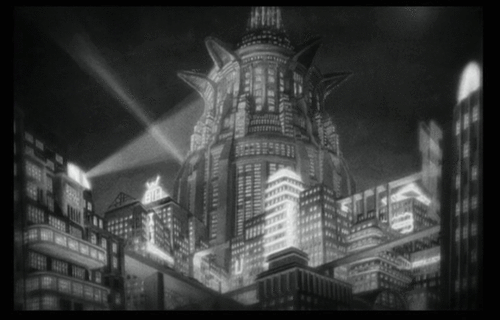 Metropolis TowerDeloitte and other corporations who promote the hot desking model have re-invented the migrant-worker. Someone, who wanders from place to place, never able to ground herself. Never sensing her place—or giving her loyalty. Hot desking destroys worker morale and camaraderie. It also annihilates the ground-breaking creativity that arises spontaneously from co-worker discussions. The creative discoveries generated through casual co-worker interaction cannot be planned by booking a boardroom. You can’t compartmentalize creativity.
Metropolis TowerDeloitte and other corporations who promote the hot desking model have re-invented the migrant-worker. Someone, who wanders from place to place, never able to ground herself. Never sensing her place—or giving her loyalty. Hot desking destroys worker morale and camaraderie. It also annihilates the ground-breaking creativity that arises spontaneously from co-worker discussions. The creative discoveries generated through casual co-worker interaction cannot be planned by booking a boardroom. You can’t compartmentalize creativity. I predict that hot desking will not only reduce creativity at work, but it will exacerbate worker absenteeism, sickness, a cavalier attitude and lack of loyalty. In effect, hot desking will produce someone who doesn’t care: at the most, a “rubber-stamping” drone and at the least a slacker who cheats.
The Australians created the term solastalgia to describe the terrible sadness caused by environmental change or loss. It is a very real distress caused by the lived experience of the transformation of one’s home and loss of a sense of belonging. It’s like feeling homesickness when you’re still at home. Given how much time and effort people regularly put into their workplace, this is Germaine to the office experience.
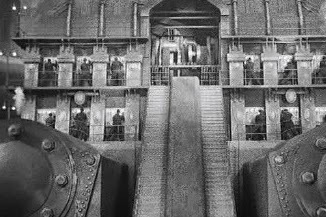 Drone workers of the Metropolis machine
Metropolis
, the 1927 classic dystopia by Fritz Lang, is about the social crisis of a world where the selfish “dreams of a few had turned to the curses of many” (Fritz Lang, Metropolis).
Drone workers of the Metropolis machine
Metropolis
, the 1927 classic dystopia by Fritz Lang, is about the social crisis of a world where the selfish “dreams of a few had turned to the curses of many” (Fritz Lang, Metropolis). There is a scene in this evocative film where creative men of antiquity decide to build a monument to the greatness of humanity, high enough to reach the stars and reminiscent of humanity’s hubristic construction of the Tower of Babel. Metropolis is a world dominated by technology and greed, where the bulk of the people are dehumanized workers, who more resemble machines in their jerky rhythmic movements and laconic faces than the oppressed humans they are. The “heart” is missing between the “brain” and the “hands”.
 worker drones in Fritz Lang's "Metropolis"When a corporation removes “the heart” of the workplace from the worker (citing increased efficient use of space) the cost is the very humanity—and productivity—of that place and ultimately the worker in it.
worker drones in Fritz Lang's "Metropolis"When a corporation removes “the heart” of the workplace from the worker (citing increased efficient use of space) the cost is the very humanity—and productivity—of that place and ultimately the worker in it. Hot-desking is just another version of Metropolis .
References:
Marr, Garry. 2014. “Hot desking trend grows: no offices or assigned seating at new Deloitteheadquarters”. Financial Post, September 11, 2014.
Munteanu, Nina. 2002. “Virtually Yours”. First appeared in Issue 15 of Hadrosaur Tales (Dec., 2002); reprinted in Neo-Opsis Science Fiction Magazine (Issue 3, Spring 2004); translated into Polish and reprinted in Nowa Fantastika (January 2006); translated into Hebrew and reprinted in Bli-Panika (2006). Selected for The Best of Neo-Opsis Science Fiction Magazine Anthology (Bundoran Press, 2006); nominated for Canadian Aurora Prix and the Speculative Literature Foundation Fountain Award. Reprinted in “Natural Selection: a collection of short stories” (Pixl Press, 2013). Reprinted in Amazing Stories (Amazing Stories, 2014).
Munteanu, Nina. 2008. "Climate Change--Part 2: Solastalgia". The Alien Next Door, April 1, 2008.
Lang, Fritz. 1927. "Metropolis". Paramount Pictures.
Published on September 13, 2014 21:53
September 6, 2014
Creating Science Fiction with Nina Munteanu at George Brown College
 I am again teaching my workshop-style course on how to write science fiction this fall at the St. James Campus of George Brown College in Toronto, Canada.
I am again teaching my workshop-style course on how to write science fiction this fall at the St. James Campus of George Brown College in Toronto, Canada.Called "Creating Science Fiction" the 12-week course runs Wednesday nights from 6:15 to 9:15 starting September 17 through to December 3. It costs $278.
I run the course like a workshop with lots of students input and feedback on their WIP.
Course Description: Learn about what is involved in writing science fiction and getting it published. Explore the essential tools used in this genre (including world building, research and plot approaches), and work toward a publishable original work by learning to generate and follow through with premise, idea and theme.
Here's what some students have said about the course:
Nina is:
“Sharing, open, lively.”
“Always willing to answer questions. Very supportive.”
“Very passionate about teaching, with a great logical presentation that makes it super easy to understand the concepts. Excellent teacher! I never mark all excellent.”
“She is helpful, makes us work on our writing, and cares about us.”
“She is a published author and gave us insight into the business & writing aspect of science fiction so she has a lot of hands-on knowledge & genuinely loves sci-fi.”
What other courses would you like us to offer?
“Science Fiction 2 with Nina—I’d pay double. She was (by far) the best instructor I have had in 2 years and several Writing Courses at George Brown.”

Students can register here: http://coned.georgebrown.ca/owa_prod/cewskcrss.P_CrseGet?subj_code=LIBA&crse_numb=9351
George Brown College is located on 200 King Street, Toronto, Canada.
See you in class!Nina
Published on September 06, 2014 20:44




